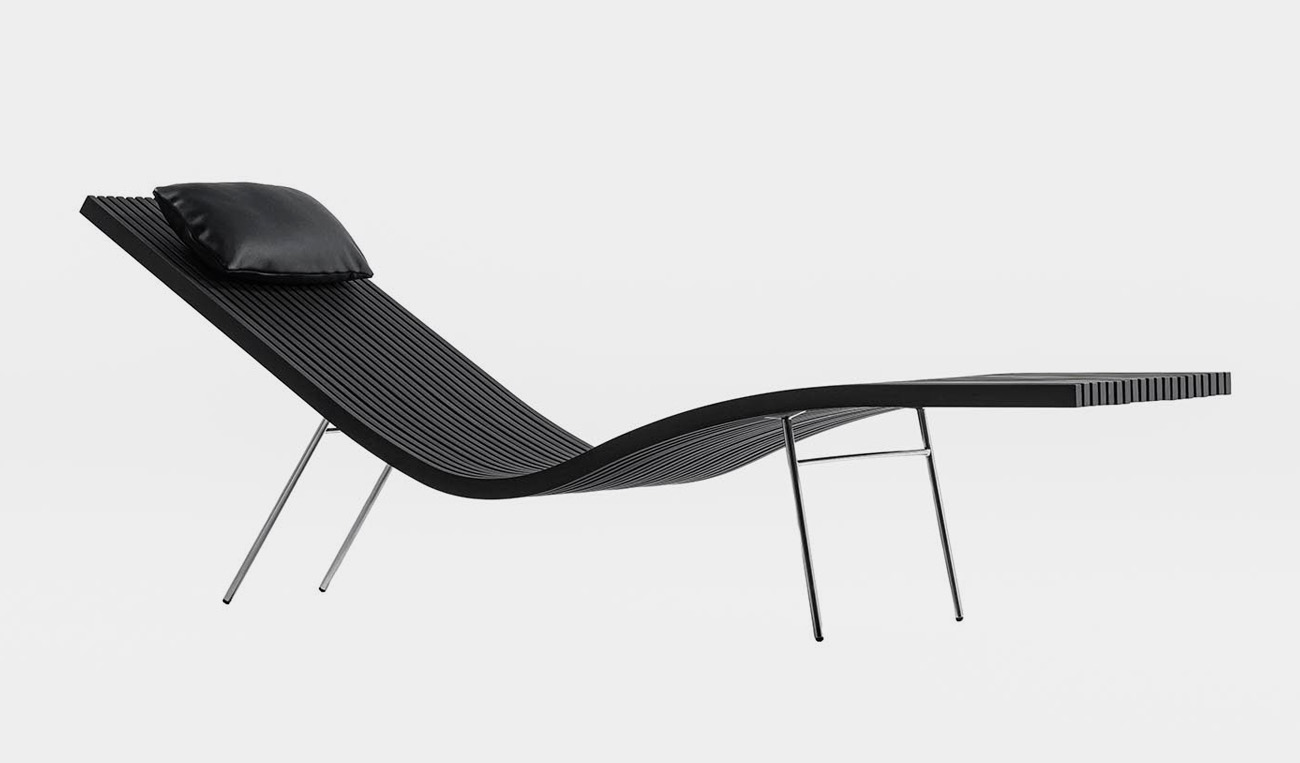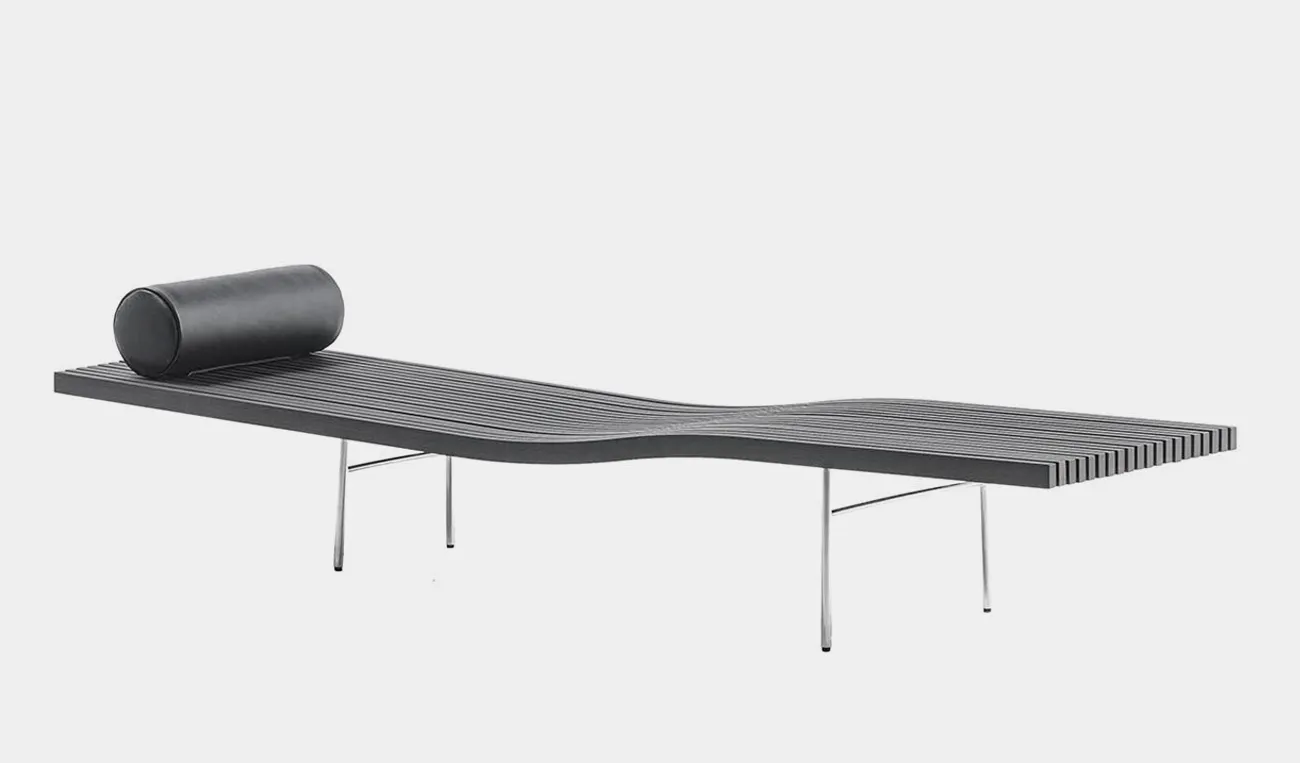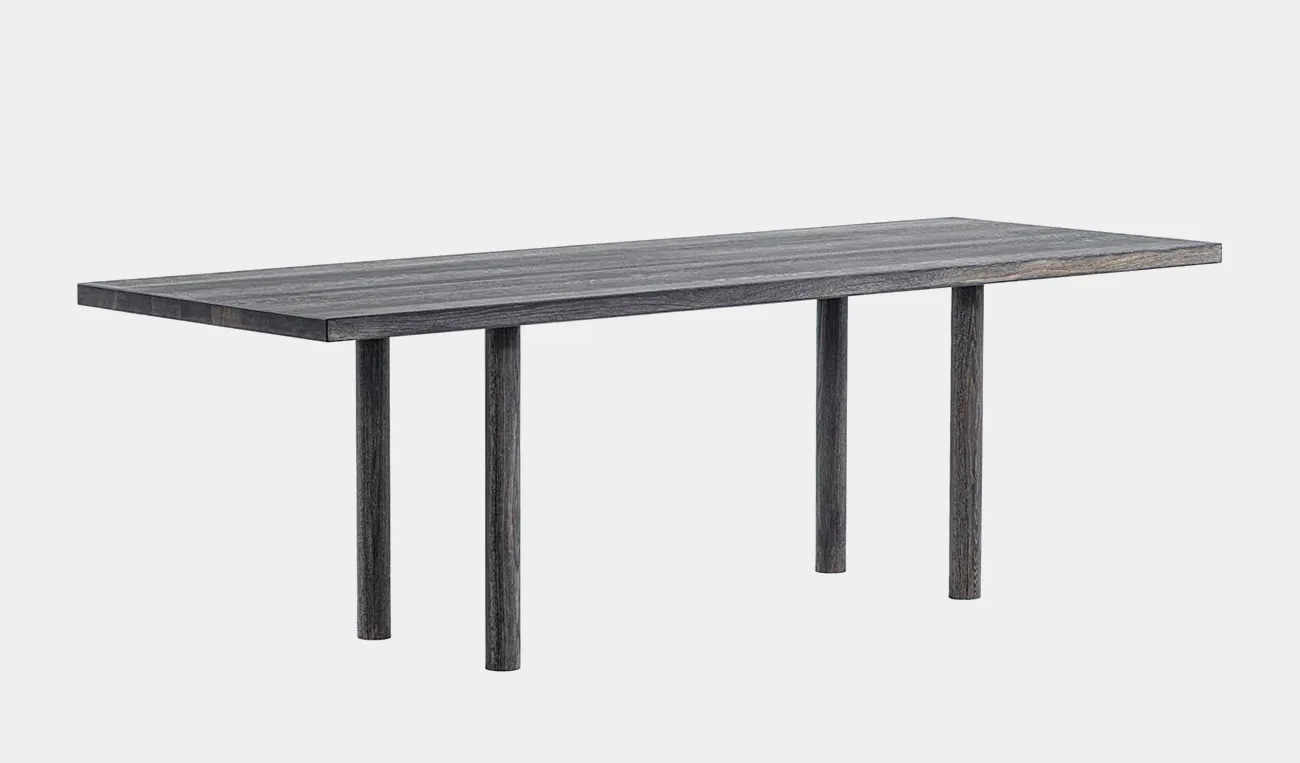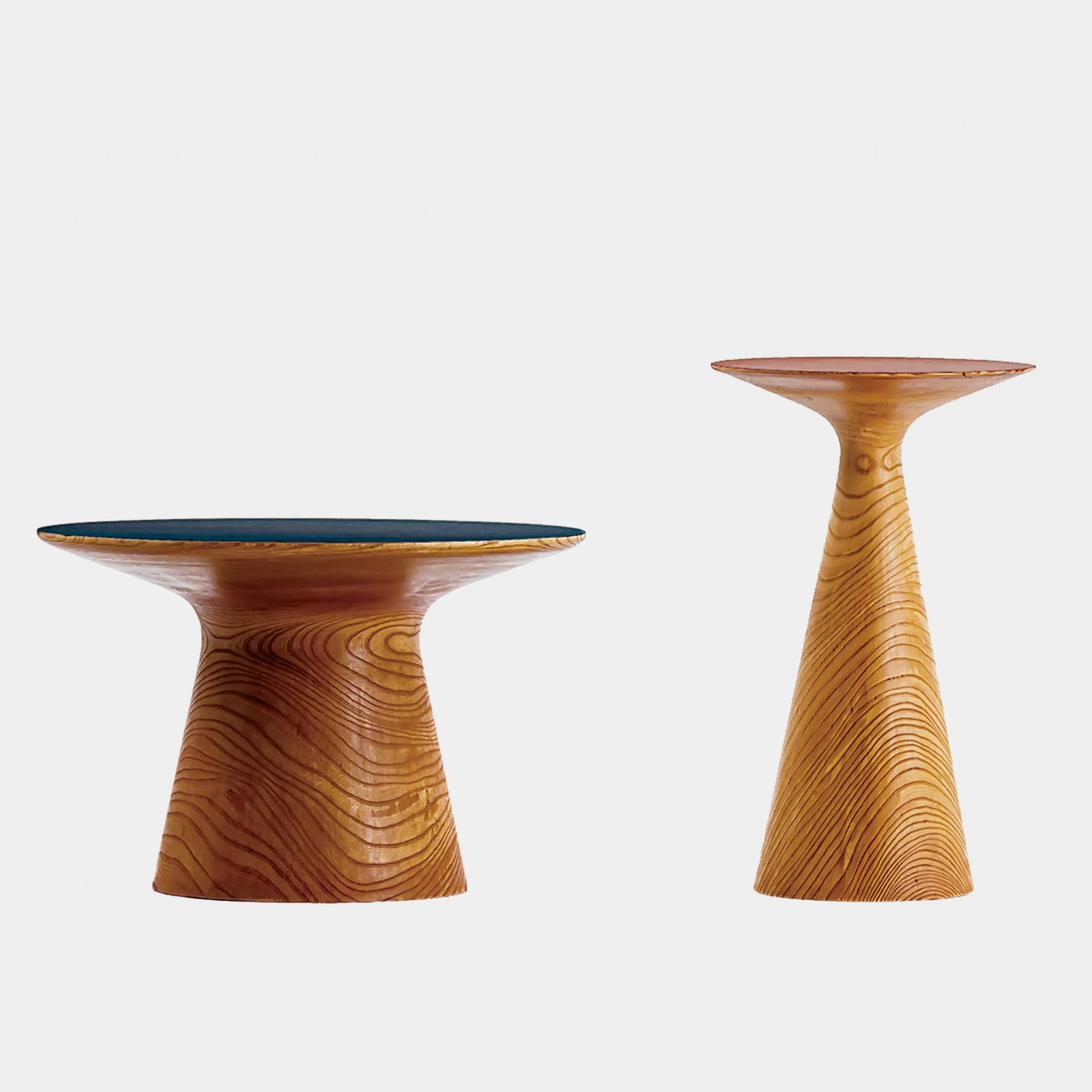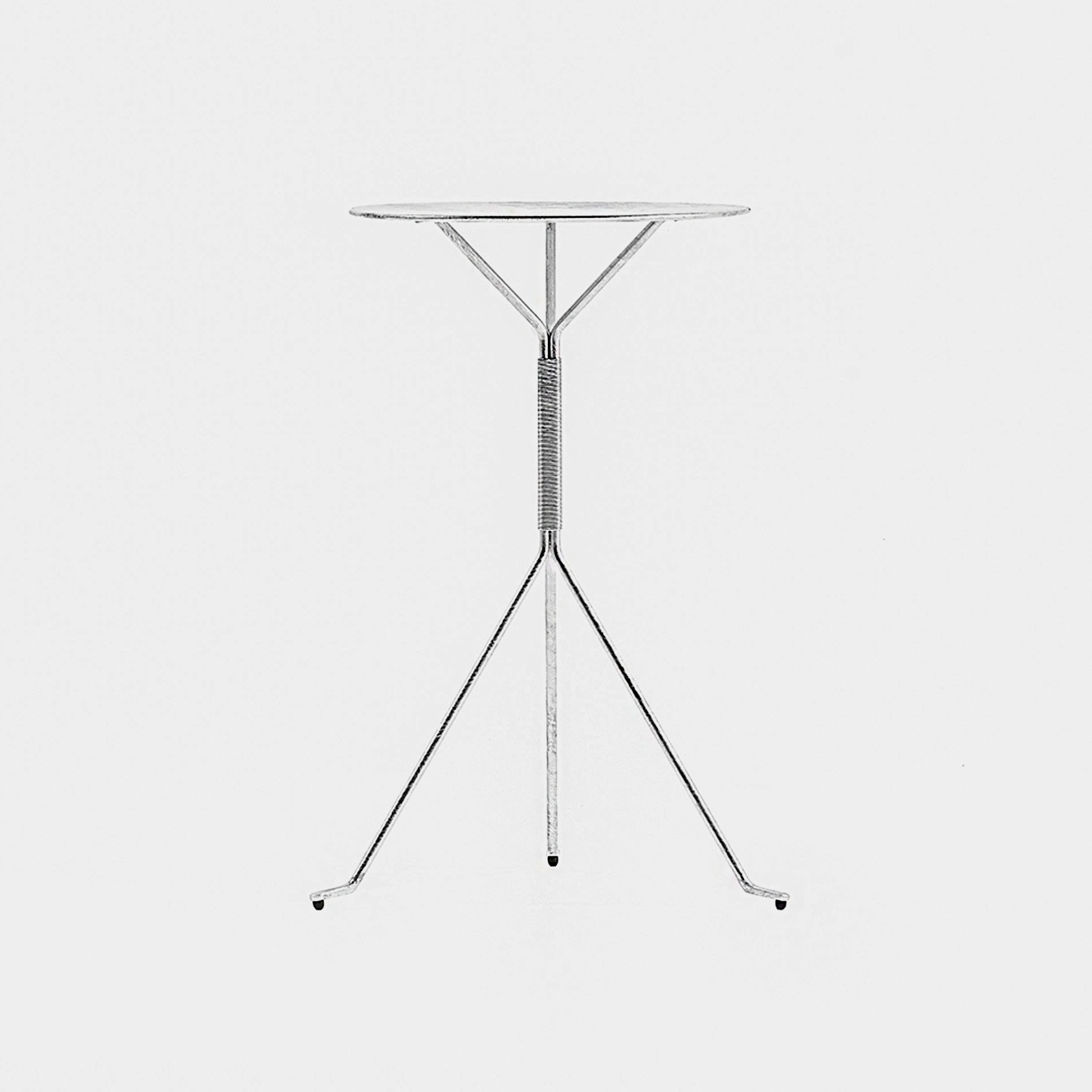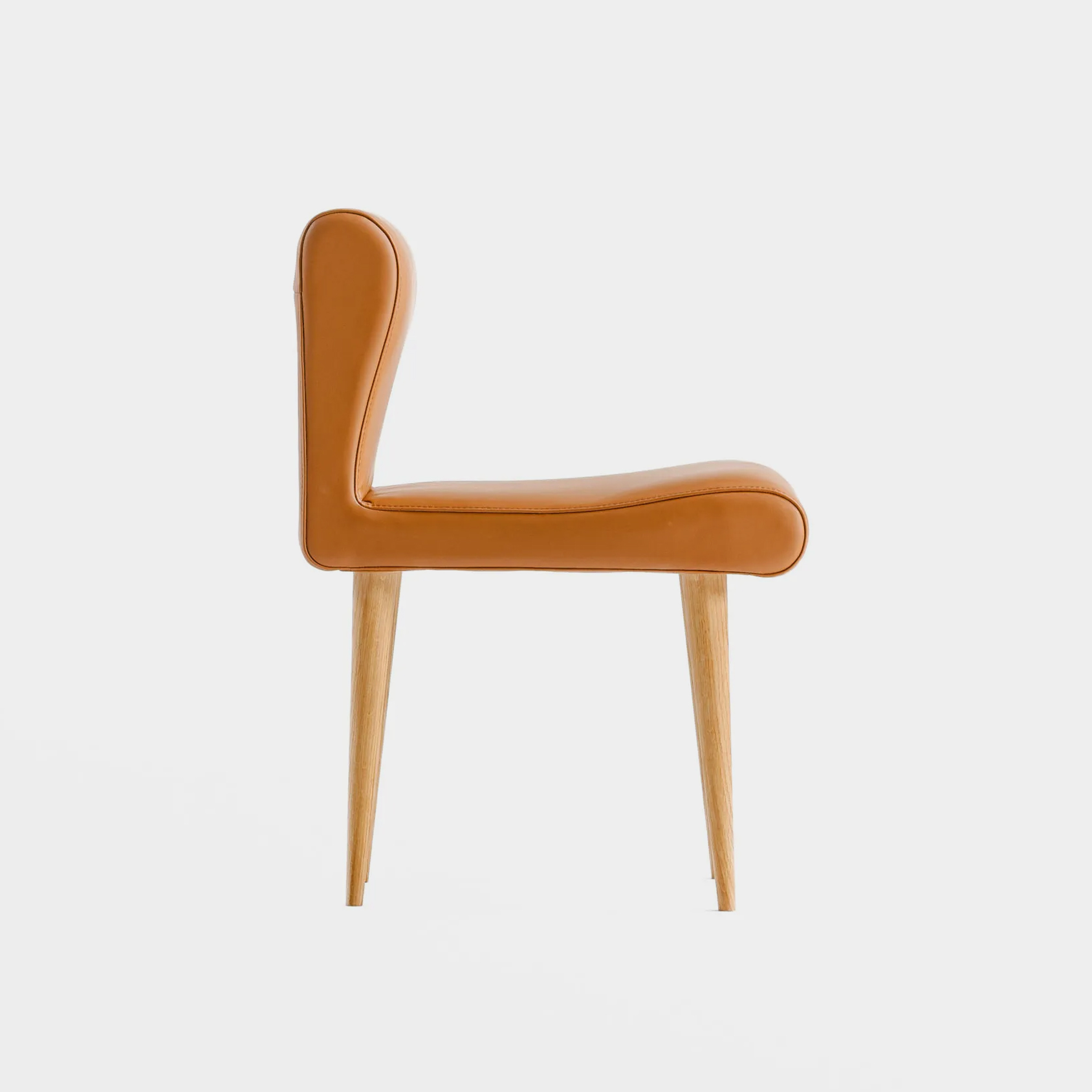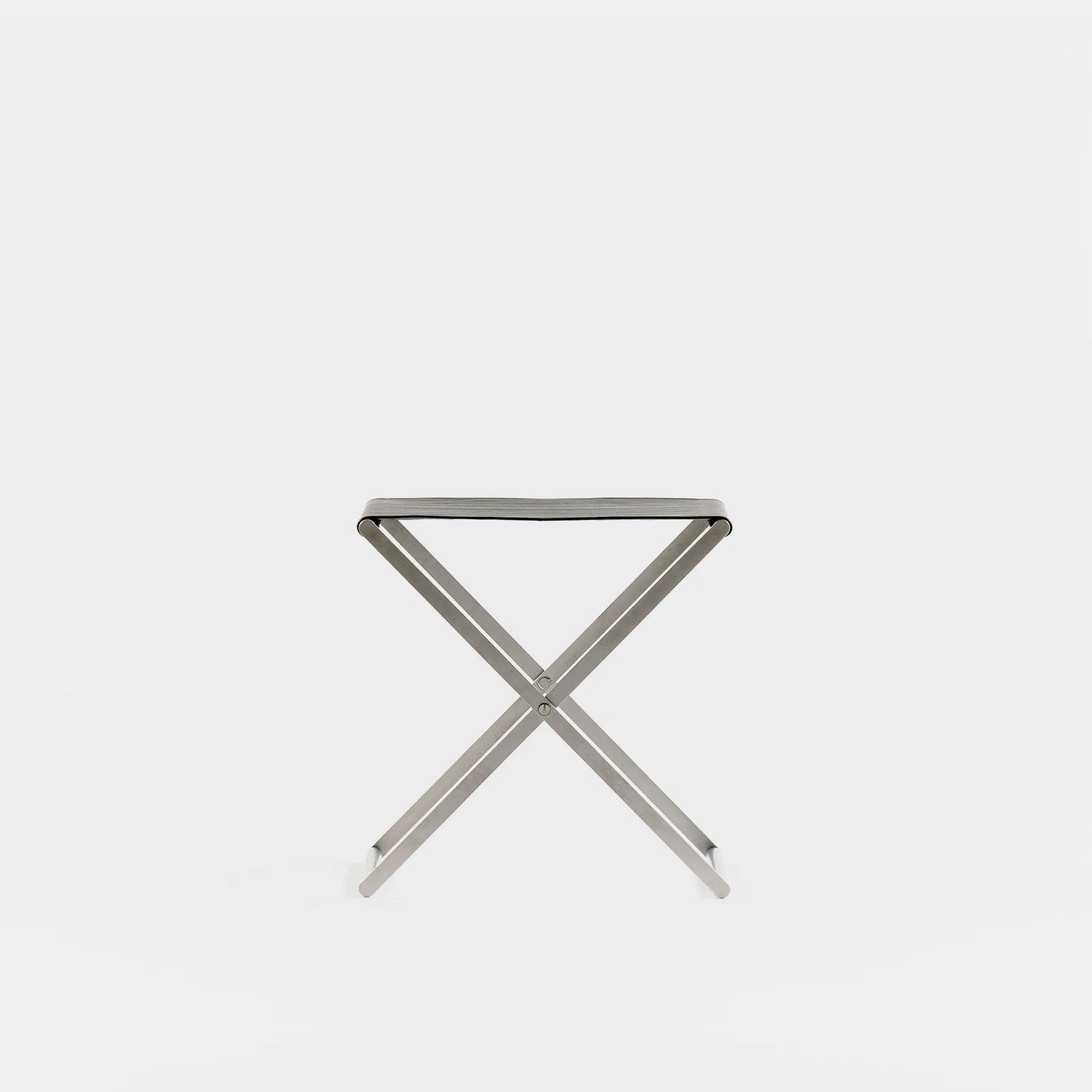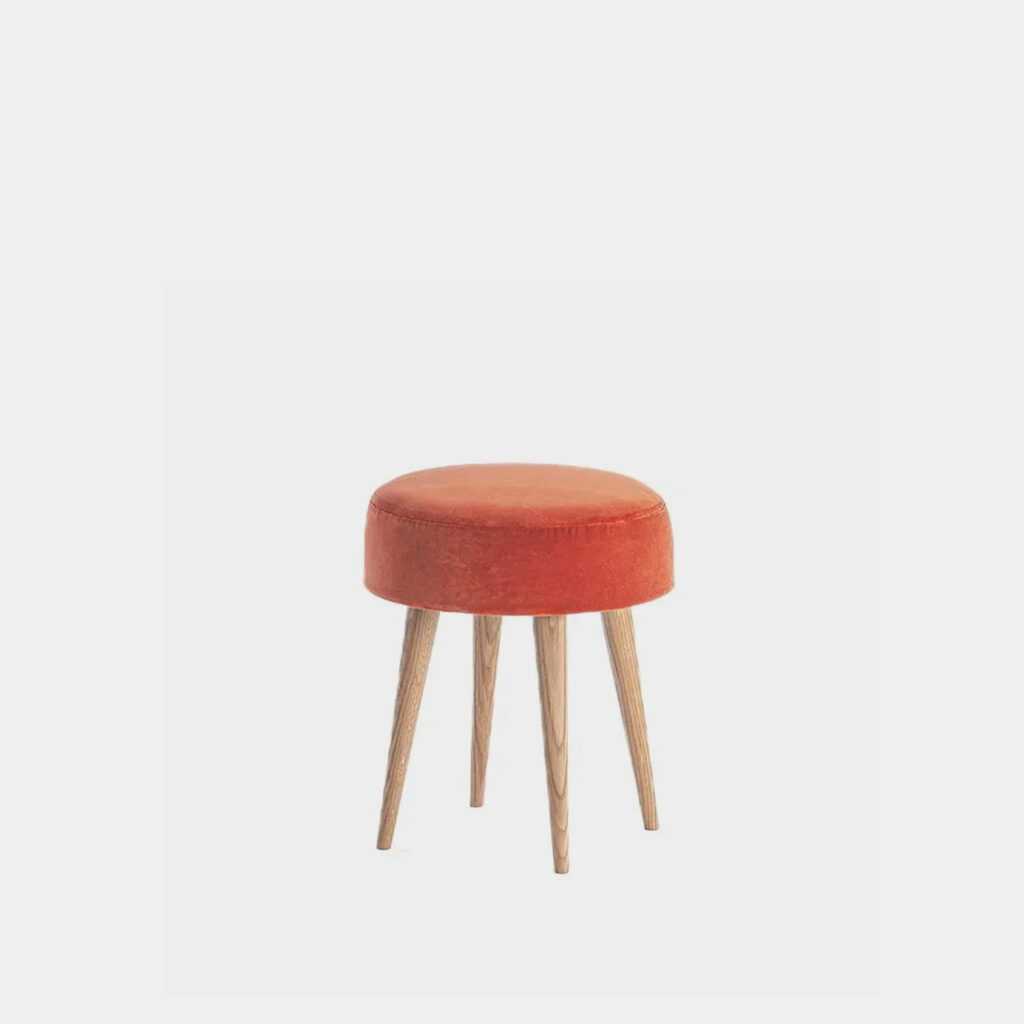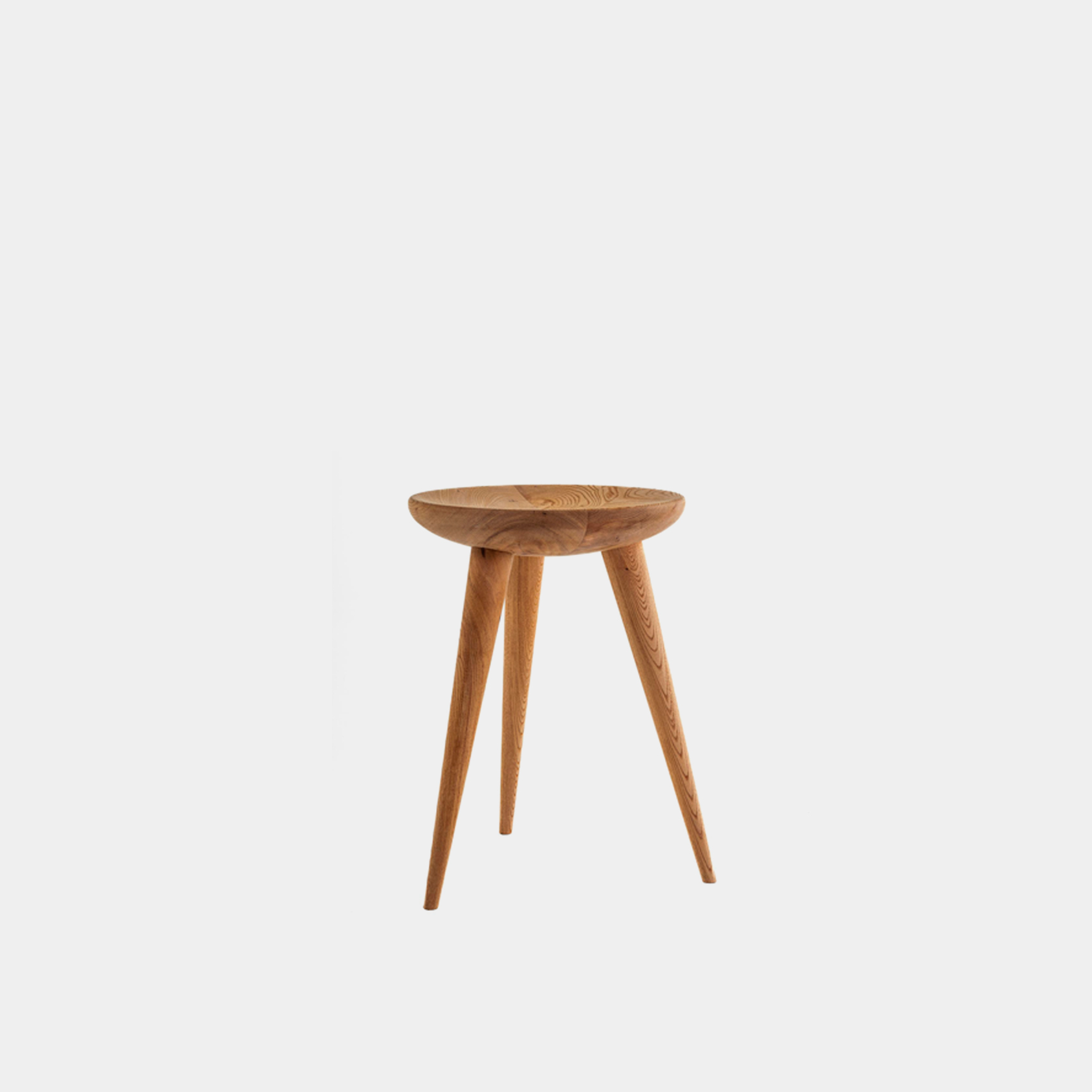Allmanna
Stool
Leis Houses | Leis, Switzerland | 2009
In a small town nestled deep in the Norwegian fjords, Sauda once thrived on the mining industry. To preserve the history of the mine, which closed in 1899, Peter Zumthor designed the Almannajuvet Zinc Mine Museum, which opened in 2016 in the valley where the mine once stood. This museum is only open during the limited period from June to August and consists of a series of buildings spread out, including toilet facilities, a cafe, and a gallery. The stool used in this cafe building is the Allmanna Stool.
This stool is composed of the minimum necessary elements to form a stool: a seat and three legs, all made of solid wood. The seat is crafted with a gently curved shape to cradle the buttocks comfortably, while the legs feature a slender, tapered design. This simple yet warm design enhances the appeal of the stool. The original seat was crafted with intricate joinery in Black Alder wood, but for manufacturing in Japan, solid Zelkova wood was used with minimal joinery to showcase the natural expression of the wood.
ノルウェーのフィヨルド奥深くに位置する小さな街、セウダはかつて鉱山業で栄えました。1899年に閉山されたその鉱山の歴史を伝えるため、鉱山跡地の渓谷に、ピーター・ズントー氏が設計したアルマナユヴァ亜鉛鉱山博物館が2016年にオープンしました。この博物館は6月から8月までの限定期間のみ公開されており、トイレ棟、カフェ棟、ギャラリー棟というように分散して配置された建物群で構成されています。このカフェ棟で使用されているのがAllmanna Stoolです。
このスツールは、座面と3本の脚という、スツールを形成するために最低限必要な要素で構成され、全てのパーツは無垢材で製作されています。座面は臀部のカーブを優しく受け止めるように丸みを帯びた形状に削り出されており、脚部は細身で円錐形のデザインが特徴です。このシンプルながらも温かみのあるデザインが、スツールの魅力を引き立てています。オリジナルはブラックアルダーの細かい接ぎ合わせで作られた座面でしたが、日本での製造に際しては、木の自然な表情を生かすために最小限の接ぎ合わせで仕上げられた欅の無垢材が用いられました。
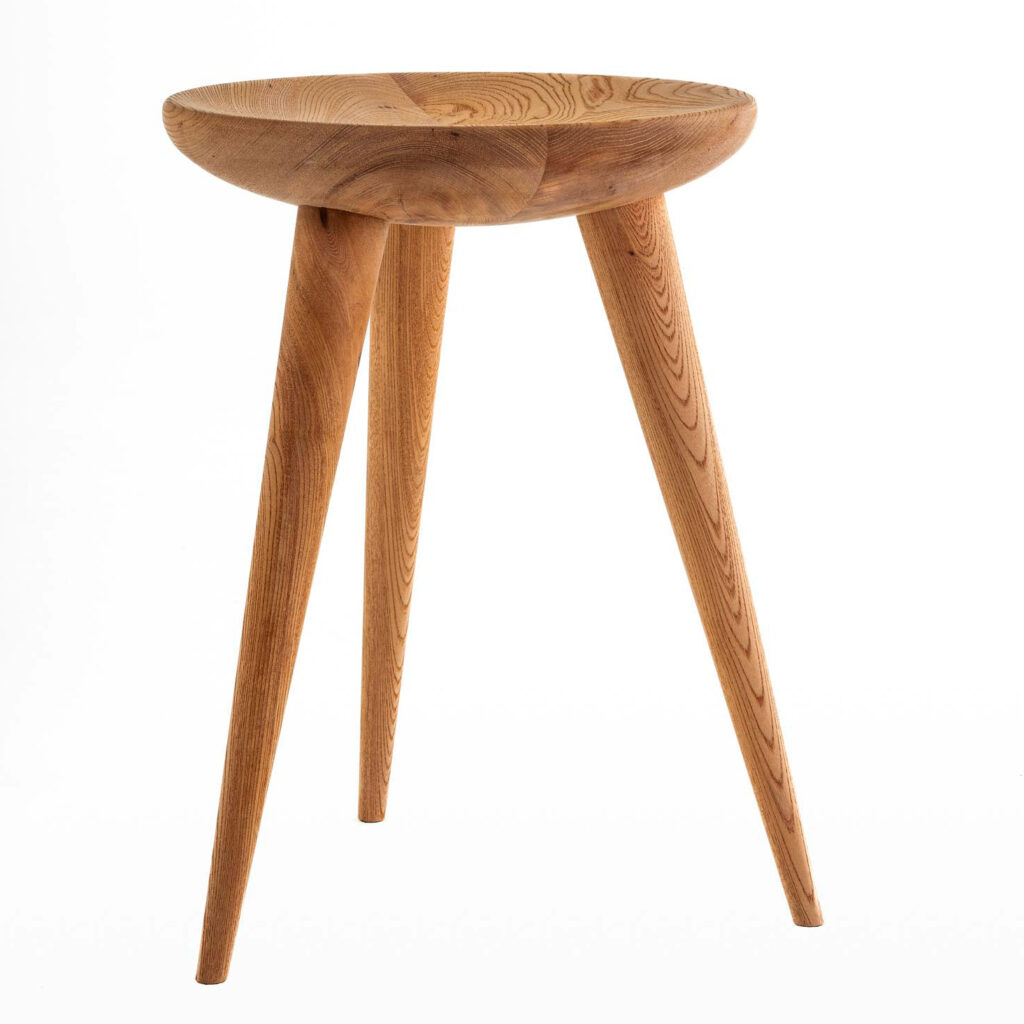
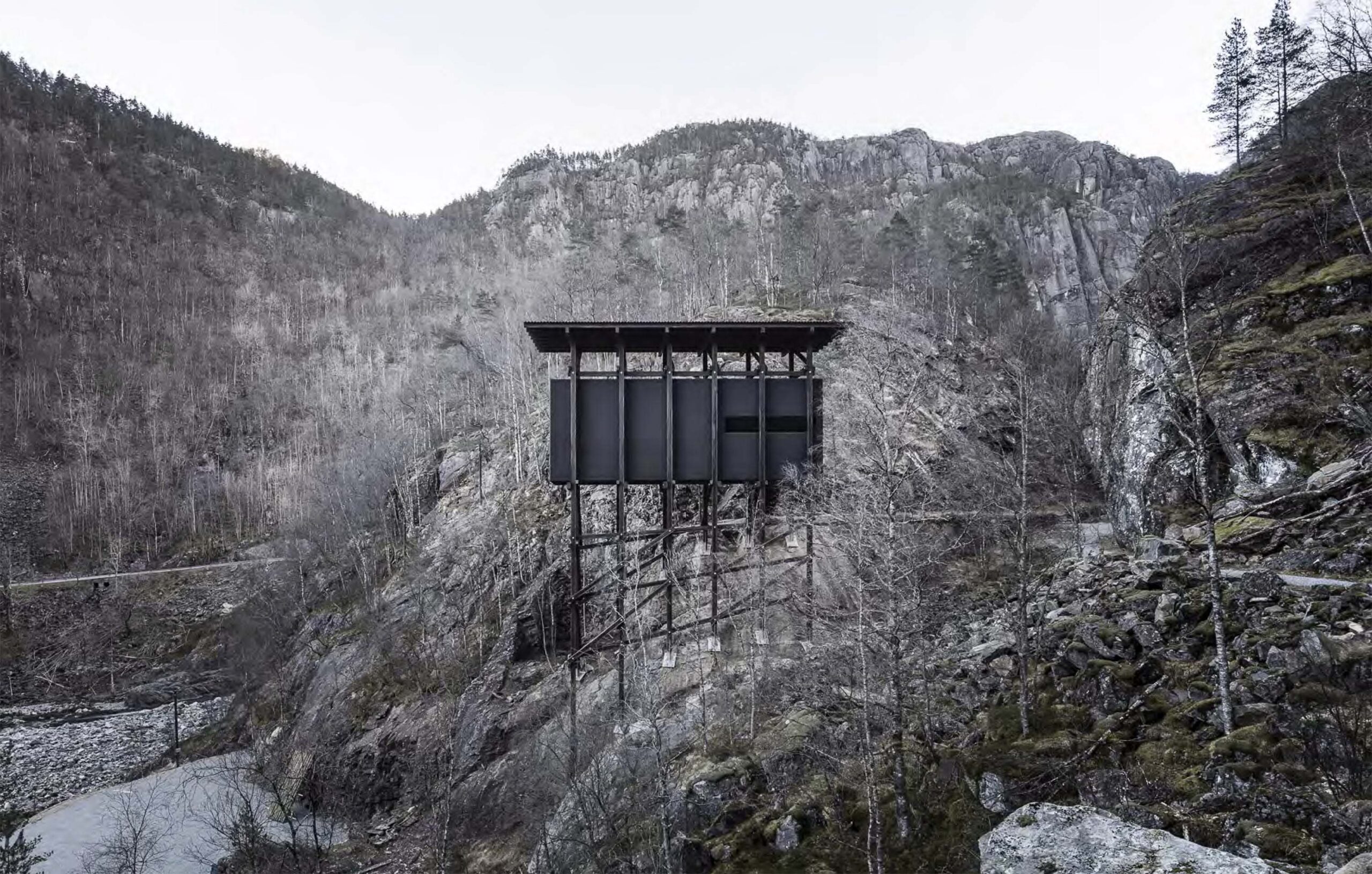
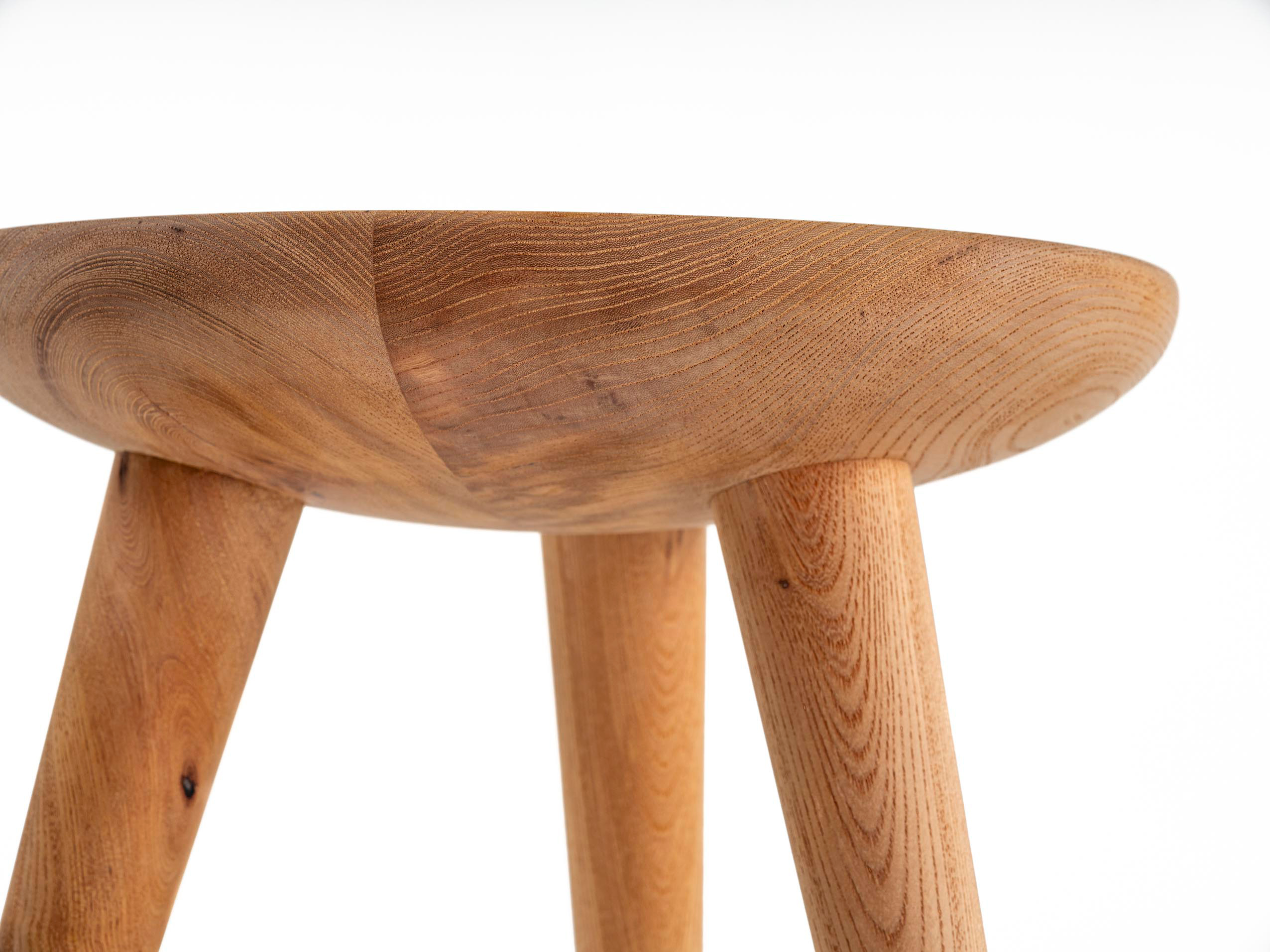
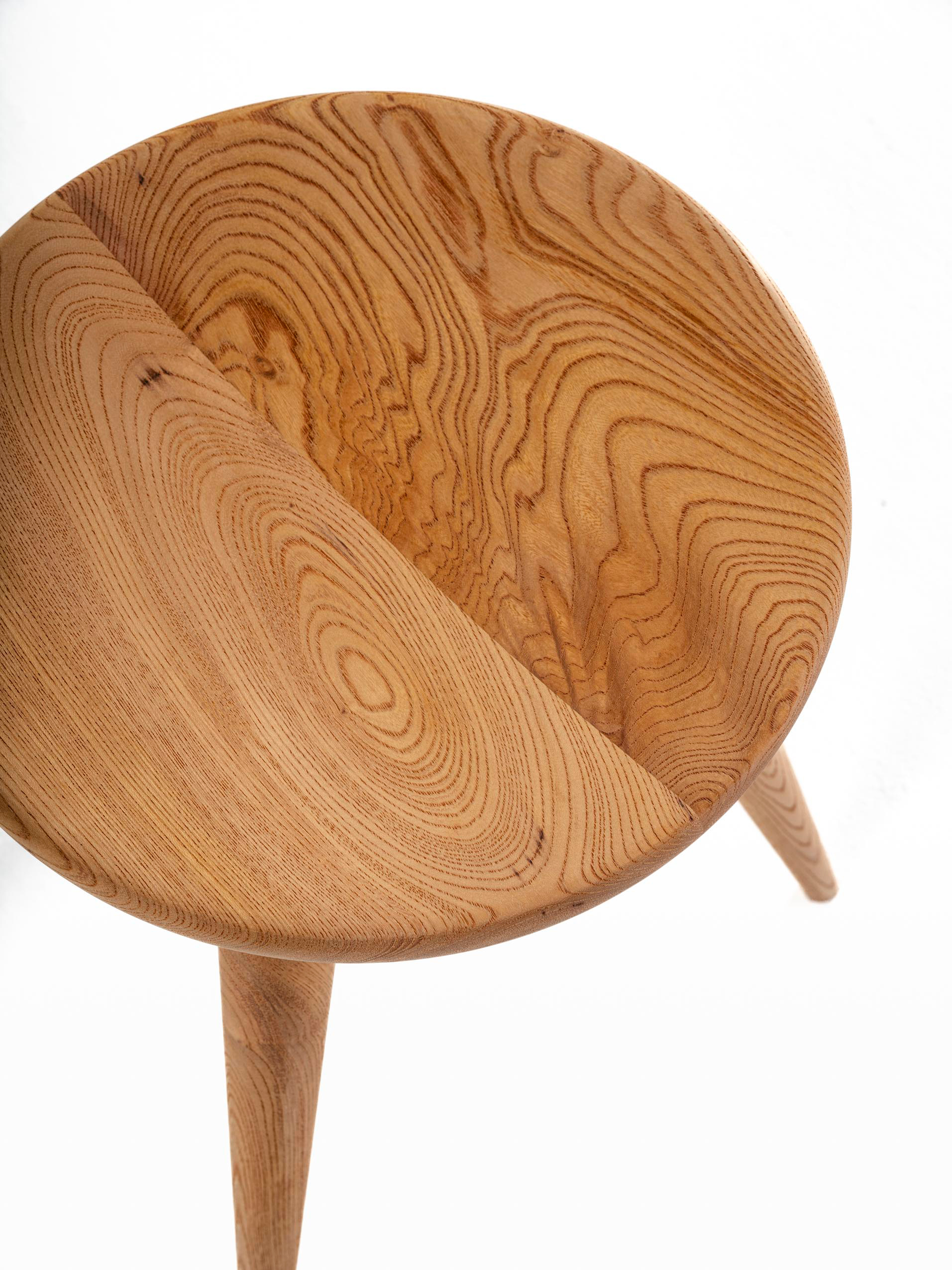
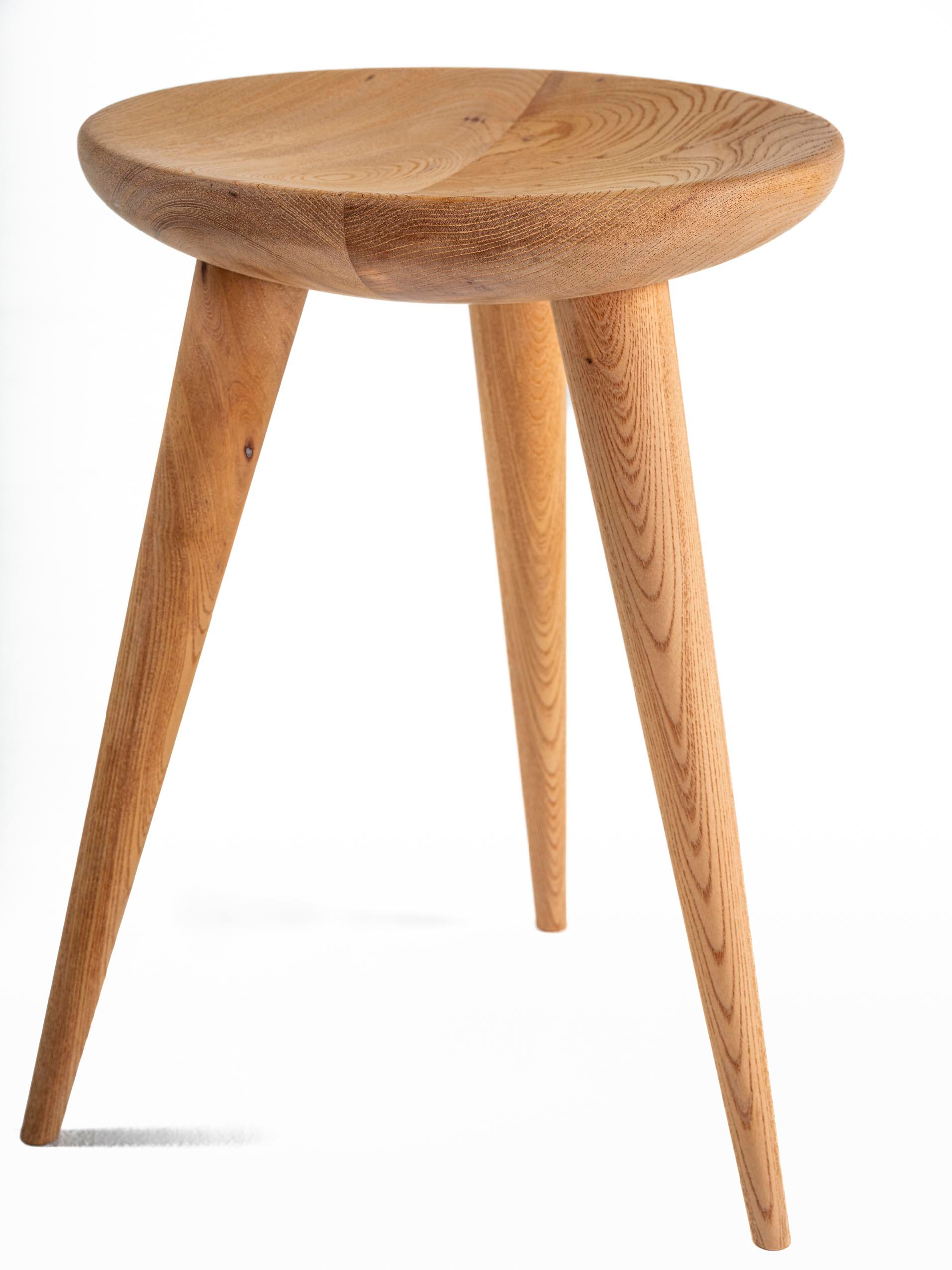
© Copyright PRESTIGE JAPAN INC. ALL rights reserved.
